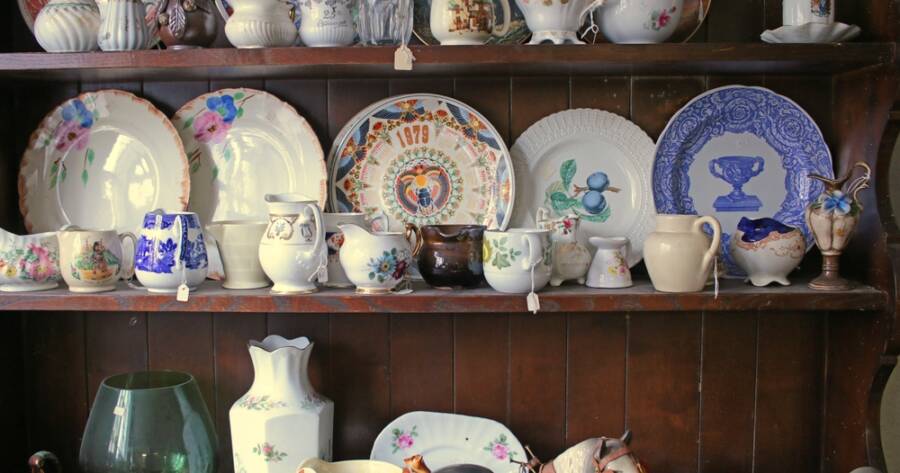Stepping into a vintage or antique shop is like entering a time capsule. Every item holds a unique history, stretching back across decades or even centuries. For those who delight in exploring the past, vintage and antique shopping offers endless excitement. The adventure lies in uncovering rare and beautiful pieces that speak to personal taste and curiosity. Discover how to make the most of antique and vintage shopping!
Understanding the Appeal
Vintage and antique items stir a sense of nostalgia that modern goods often lack. There’s nothing quite like the pop of a mid-century glass piece or a gorgeous antique dresser. As you explore these treasures, you may find items reflecting craftsmanship from bygone eras. They can also offer a sustainable way to shop, preserving history and contributing to a more eco-friendly lifestyle.
For many, the appeal lies in the uniqueness of each piece. Antique stores often house one-of-a-kind items that won’t be found elsewhere. Those intrigued by distinct style or functionality may appreciate these rare finds. Embracing vintage or antique means owning a piece of culture, rooted in stories and history.
Antique vs. Vintage
Generally, antiques are items over 100 years old, while vintage pieces are at least 40 years old but not yet antiques. Each category possesses its own charm and historical significance. Antique items can exude a sense of grandeur and craftsmanship from a distant era.
Vintage items, on the other hand, reflect trends and styles from the more recent past. They can offer a nostalgic trip back to the mid century. Both categories hold unique stories and appeal to different tastes and purposes. Knowing what you’re drawn to can help you create a curated and meaningful collection.
Exploring Different Shopping Venues
Antique and vintage shops often provide a relativley curated experience. These intimate spaces often have knowledgeable staff eager to share stories, ideal for those seeking a guided journey. In contrast, antique malls feature a vast array of vendors, creating a treasure hunter’s paradise. The sheer variety can be overwhelming, but the potential for unique discoveries is immense. With countless booths and styles, these bustling environments appeal to those who enjoy surprise and exploration.
Consignment shops, estate sales, and flea markets offer yet more avenues for discovery. Consignment shops feature items sold on behalf of their owners, often presenting high-quality finds. Estate sales allow you to explore a lifetime of belongings, offering insight into personal histories. Flea markets are bustling events, filled with diverse and sometimes quirky offerings. Each venue provides distinct opportunities to uncover remarkable pieces.
The Myths and Realities of Haggling
It’s a common misconception that haggling goes hand in hand with the antique and vintage buying process. While negotiation can occur, many shops and vendors operate with thin margins. Respecting their pricing helps support passionate sellers and their curated items. It’s essential to approach the topic thoughtfully and with consideration for the store’s policies.
In some settings, such as flea markets, haggling might be more customary. Still, politeness and understanding can lead to more successful interactions. Engaging genuinely with sellers can result in valuable insights and relationships. Whether negotiating or not, respecting the seller’s perspective often enhances the shopping experience.
The Art of Patience and Persistence
Embarking on the journey of antique and vintage shopping is much like a treasure hunt. Patience and persistence are your best allies, as not every trip results in a find. Embracing the hunt itself as part of the adventure can make each visit exciting. Sometimes you go home empty-handed, but the thrill lies in the anticipation of uncovering a hidden gem.
Frequent visits can increase your chances of stumbling upon something extraordinary. Shops and markets regularly update their inventory, so persistence pays off. Over time, you’ll develop an eye for spotting unique treasures others might overlook. Remember, each outing offers a new opportunity for exploration and discovery.
Developing a Keen Eye for Quality
Spotting quality items involves understanding materials and craftsmanship. Real wood furniture may have dovetail joints, while authentic vintage clothing might feature unique stitching techniques. The condition of an item is often a clue, with well-maintained pieces suggesting high quality.
Learning to identify makers’ marks or period-specific details can also prove invaluable. Educating yourself on what makes certain items valuable can enhance your ability to evaluate finds. Engaging with store owners and fellow enthusiasts can offer insights and tips. Over time, developing this expertise can lead to more satisfying discoveries.
Expanding Your Knowledge and Passion
Engaging with communities and events related to vintage and antiques opens new doors. Attending antiques fairs can provide learning opportunities and connections. Connecting with online forums or local clubs can reveal insider tips and foster friendships. Exploring books and documentaries about design history can deepen your appreciation.
Traveling to different regions can also introduce diverse styles and histories. Embracing this hobby as a lifestyle can unlock a world of creativity and inspiration. Sharing experiences with like-minded enthusiasts can enrich your journey. The more you explore, the more insightful your adventures can become.
Embrace the Unexpected
Vintage and antique shopping offers not just items, but stories waiting to unfold. Every piece captured from this world holds a narrative, a touch of history you can cherish. Whether for practicality or passion, these treasures can transform your environment into something wonderful. Embrace the unexpected, and allow each find to weave its magic into your life. With every venture into this timeless hobby, new possibilities can emerge, each more exciting than the last.

